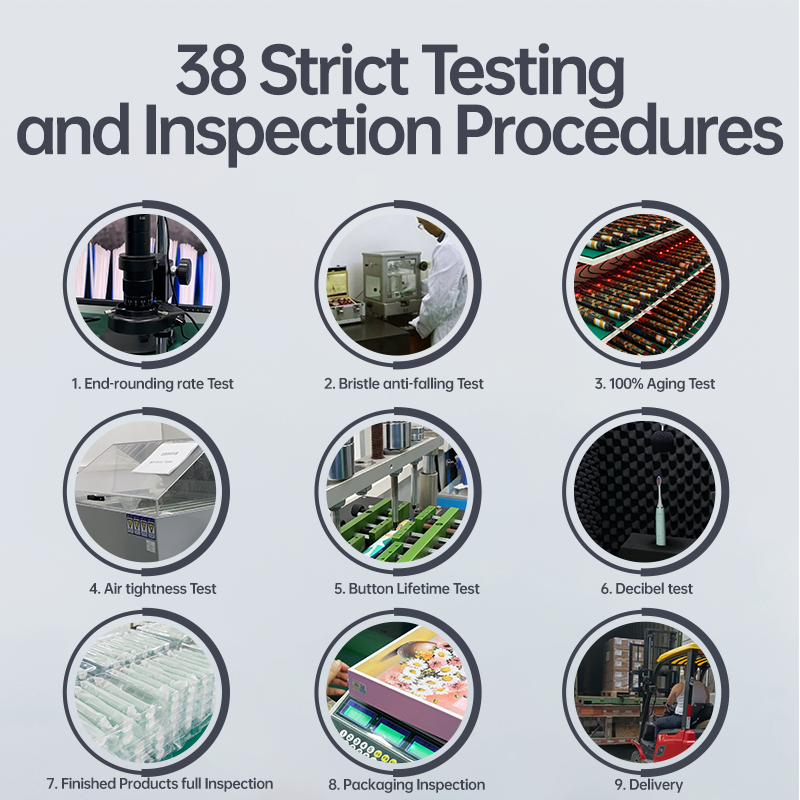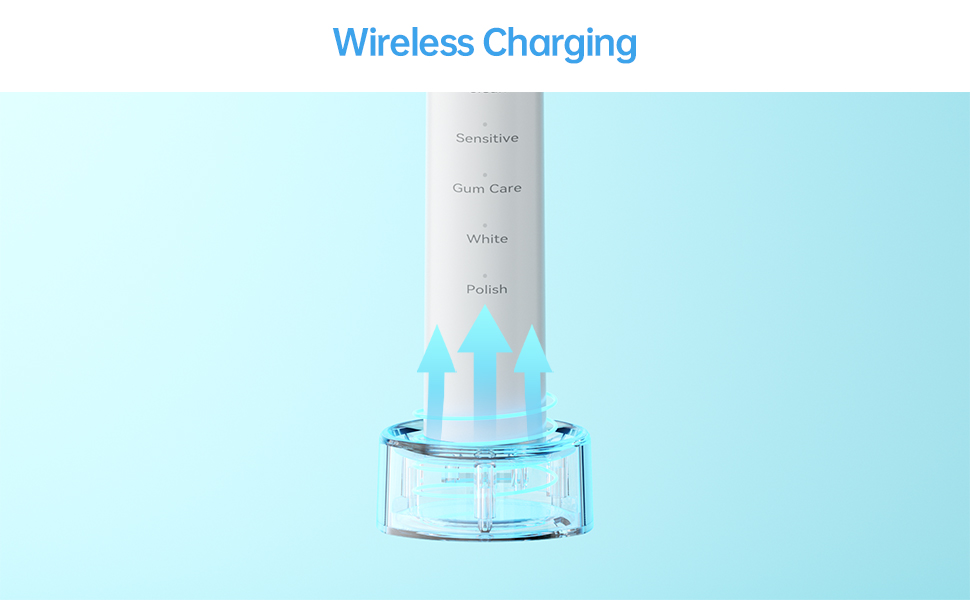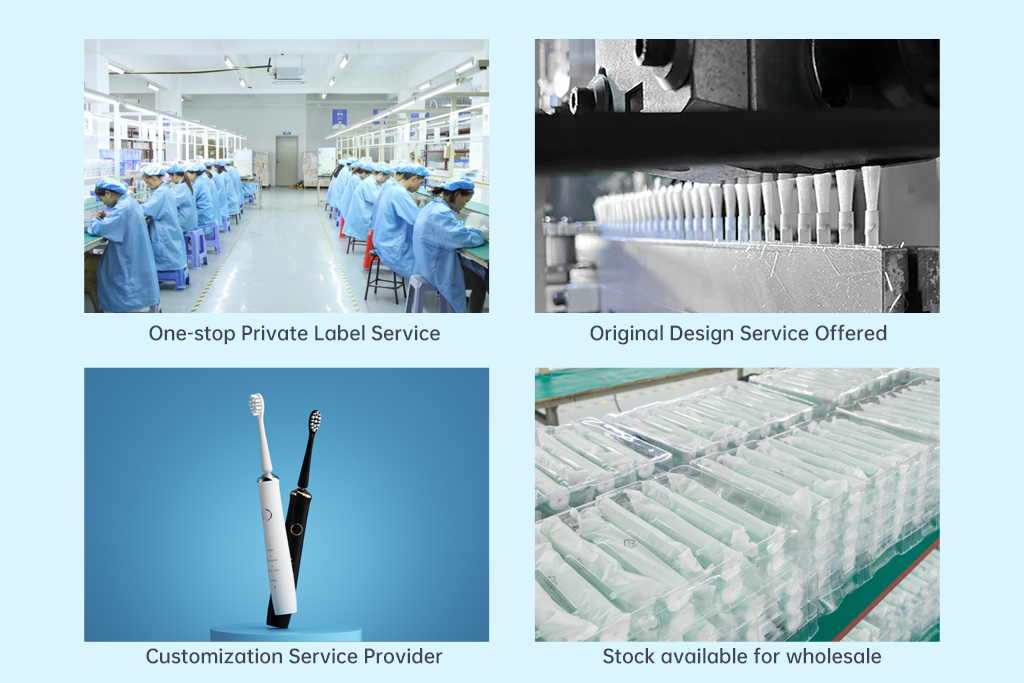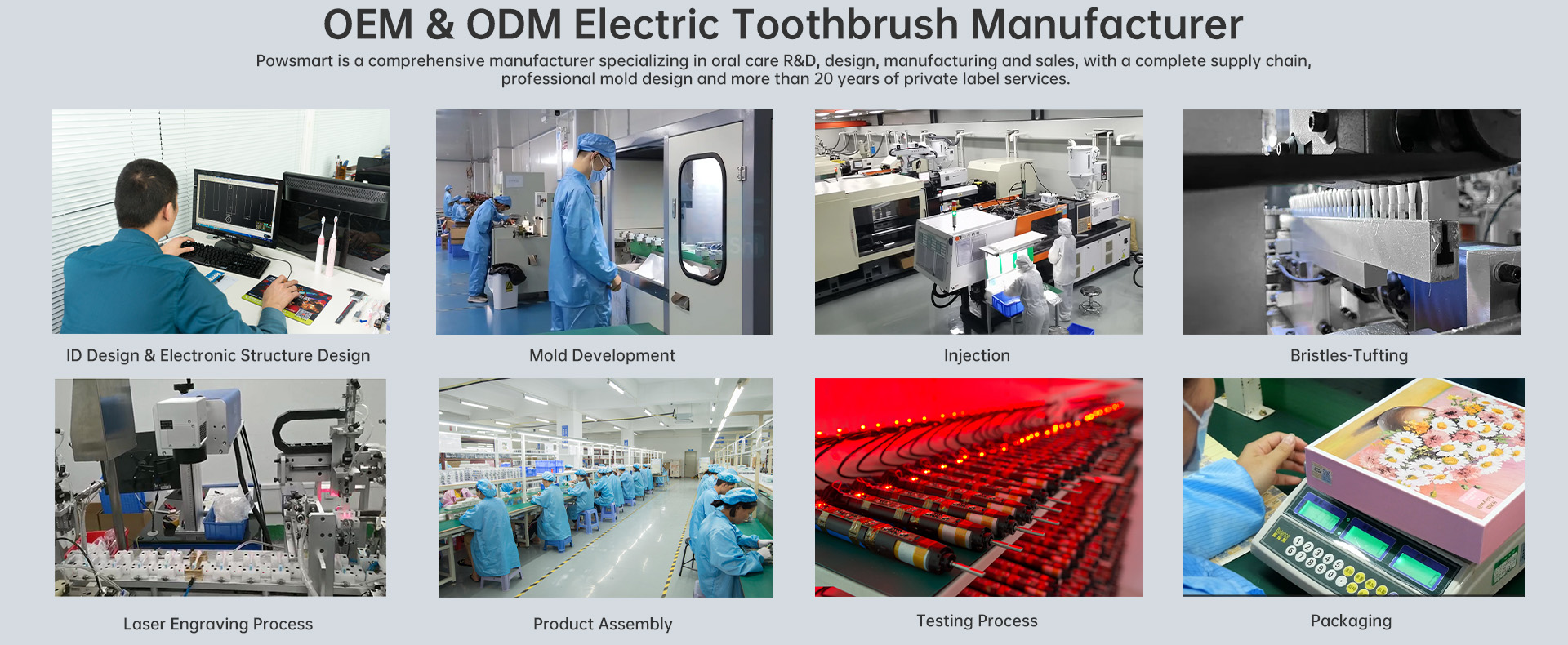When it comes to consumer safety in oral care devices, waterproof failure isn’t just a mechanical flaw—it could be a direct cause of material toxicity. Many assume that as long as a product functions electrically, it’s safe. However, water intrusion can trigger chemical degradation in materials not designed to withstand prolonged moisture exposure. For OEMs and B2B buyers, understanding the correlation between waterproof integrity and toxic material leaching is crucial to both compliance and brand reputation.
Traditionally, waterproofing is associated with protecting internal components like motors or batteries. However, in modern electric toothbrushes, water can infiltrate and compromise:
When waterproof failure occurs—due to poor IP sealing, failed ultrasonic welding, or loose assembly—the materials not intended for water exposure may begin to degrade, leading to the release of harmful substances into contact areas like grip zones or brush necks.
The connection between waterproof failure and material toxicity is chemical in nature. Prolonged moisture intrusion can:
Especially in high-temperature environments like bathrooms, this degradation process intensifies. Over time, users may unknowingly be exposed to irritants or long-term carcinogens through direct skin or oral contact. Company web:https://www.powsmart.com/product/electric-toothbrush/
Regulations such as REACH, RoHS, and FDA material compliance clearly restrict the presence of certain heavy metals, phthalates, and BPA in consumer-facing components. However, these tests often assume “dry use” conditions.
If a product experiences waterproof failure, the material’s chemical behavior under “wet conditions” could render it non-compliant. This puts B2B brands at risk of:
The origin of most waterproof breaches can be traced to:
These are often overlooked during cost-cutting or rapid scaling. A single failed batch can result in hundreds of devices with compromised enclosures.
To avoid this cascading risk, manufacturers should adopt robust design-for-waterproofing strategies, including:
OEM partners should also be transparent about their material sourcing and provide full material safety data sheets (MSDS) for each component.
At our production facilities, we run multi-stage testing, including:
All components used are pre-certified to meet global toxicity safety standards, even in failure scenarios. This gives our OEM clients confidence—not just in initial performance—but in lifecycle safety.
The link between waterproof failure and material toxicity is often invisible—until customer complaints or lawsuits arise. For B2B brands and procurement teams, selecting the right manufacturing partner means choosing one who proactively tests for failure points and material safety beyond minimum specs.
Looking to audit your current waterproof design or material selection? Reach out to our engineering team for a risk assessment tailored to your product line.



Want Electric Toothbrush Industry Insights for a Thorough Electric Toothbrush Competitor Analysis?

Beyond Aesthetics: How Integrated Design Elevates Your OEM Electric Toothbrush

Is Kids’ Electric Brushing Really Safe?
.jpg)
Is Sensitive Gum Electric Toothbrush Shedding Bristles?
.jpg)
Overbrush Habit Causing Pulp Inflammation – Irreversible?
.jpg)
Gentle Oral Care Products for Sensitive Gums: A Guide for Brands Seeking the Right Manufacturer
User Adaptation Struggles from Improper Angle Use? Device Design Matters!
Does a Water Flosser Require Regular Maintenance? How Should It Be Cleaned?
.jpg)
The Secret of the Cross-Sectional Shape of Electric Toothbrush Bristles: The Difference Between Diamond, Round and Cone in Protecting Gums
Light Burns Cause Bite Misalignment? Whitener Safety Controversy!
.jpg)
Can Cartoons Improve Brushing Habits?
.jpg)
Real-Time Brushing Tracking: How Smart Toothbrushes Improve Oral Care
.jpg)
Developing an Electric Toothbrush Sourcing Strategy?

Technique Affecting Periodontal Pocket – How Deep Is the Impact?
Gum Recession from Pulse Inconsistency? Uncover the Overlooked Risk in Oral Care Devices

Antibacterial Water Flosser Technology Trend: The Importance of UV Sterilization for Water Tank Hygiene Assurance

electric toothbrush heads Regular Clean

Private Label Whitening Gel

Electric toothbrush heads Charcoal Infused-Diamond

electric toothbrush heads Charcoal Infuse-Round

Customization Teeth Whitening Gel

electric toothbrush heads Ultra Soft

electric toothbrush heads Deep Clean
.jpg)
Florida Electric Toothbrush – Powsmart PTR-C8
whstapp
whstapp
National Toll-Free Service Hotline
+86 755 86238638